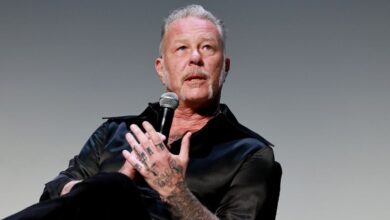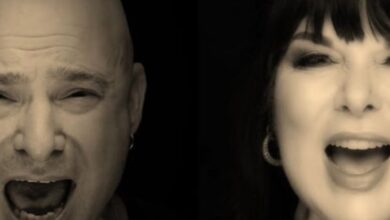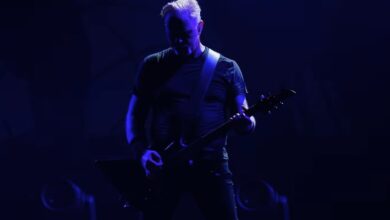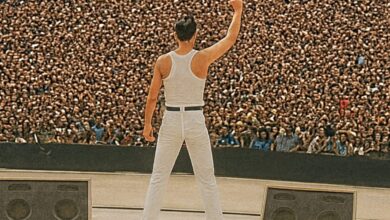Sophie Lloyd’s Epic Guitar Solo Stuns 82,000 at Rugby World Cup 2025 Final
The noise hit you first. A full-house roar rolling around Twickenham like weather, whistles cutting through the din, drums from the fan sections thudding in counter-rhythm. Then a single guitar note sliced the air—clean, bright, and a little dangerous. Sophie Lloyd strode to the center of the pitch, a lone figure in an ocean of green turf and camera cranes, and detonated a solo that turned a rugby final into a stadium rock show. The Women’s Rugby World Cup was about to decide a champion, but for a few glorious minutes the world’s biggest rugby cathedral belonged to six strings and intent.
Lloyd didn’t noodle. She attacked. The opener was a tight, muscular statement full of pick harmonics and rapid fire runs, then a pivot into big, sing-it-from-the-rafters hooks that the entire stadium tried to howl along to. Reports from the night confirm she built a medley around her original track “Battleground,” then vaulted into Bon Jovi’s “Livin’ on a Prayer,” the kind of chorus that even non-guitar people mouth instinctively. The contrast—authorial shred into canonical anthem—was the trick. It let 80-plus thousand first experience, then recognize. The sound of recognition is louder.
There were other jolts and winks tucked in. Depending on where you were seated (and which broadcast clips you later saw), you heard hints of contemporary pop-rock swagger too—snatches that owed more to radio than arena metal. One outlet even clocked Lloyd folding in a burst that nodded toward the Black Eyed Peas’ “Pump It,” a wink that made the medley feel like a conversation with the crowd’s collective memory rather than a monologue. That’s smart showcraft: assemble a set of melodic breadcrumbs and let 82,000 people feel like they found the path home together.
The scale mattered. Twickenham—official attendance announced at 81,885—was a wall-to-wall mosaic of flags, face paint, and phone lights, a record-setting scene for the women’s game. Rock-show atmosphere isn’t just about decibels; it’s about density. When that many voices hit the “woah-oh” spine of “Livin’ on a Prayer,” you could see the wave move before you heard it, starting in the North Stand and rolling clockwise, a visible chorus. Lloyd rode it like a surfer catching a clean set—laying back on sustained notes, then sprinting through runs that ricocheted off the concrete like applause.
If the set felt unusually personal for an opening ceremony, that’s because it was. After the performance, Lloyd called it “one of the proudest moments of my life,” a line that wasn’t PR varnish so much as a diary entry posted publicly. Stadiums are built for teams, not lone guitarists, yet her slot made a case for the instrument as banner, not prop—something you can rally under without lyrics. That’s the old rock promise, made new on a rugby night: one person can make a very large space feel like a very small room.
There’s a cunning production logic to placing a shred solo just before kickoff. Rugby’s drama is episodic—set piece, collision, scramble, reset—and guitar instrumental music mirrors that grammar better than a ballad would. The stop-start energy of palm-muted gallops felt like a preview trailer for mauls and counter-rucks, the big chorus like a rehearsed version of the spontaneous eruptions to come. In a final between England and Canada, the medley functioned as a weather report: expect pressure systems, sudden breaks, and the occasional lightning strike.
And then the match delivered. England’s Red Roses, stung by past final-day heartbreaks, came out with purpose that felt like punctuation. Ellie Kildunne’s searing solo try—swerve, gear change, vanish—was the athletic equivalent of a tapped-harmonic lick: audacious and so clean it seemed inevitable as soon as it began. Canada pounced early and kept biting at the ankles of England’s structure, but the hosts’ mix of power in the tight and fluency in the wide channels wore at the clock. It was a performance built on repetition until the door opened.
The numbers on England’s era are wild—dozens of wins since turning fully professional, a defensive line that looks pre-programmed, and an engine room that treats collisions like chores to be checked off. In the final, that manifested as relentless field position and the kind of maul that makes opposing fans mutter at the laws. Canada, brave and adventurous, had their moments in the broken field, but the Red Roses’ second-half control felt like the clinching middle eight in a great song, consolidating momentum and setting up a closing chorus you could not miss.
Around the main event, the wider tournament narrative kept pressing in. New Zealand had earlier beaten France in the bronze final, an emotional salvage job after their own upset, which set the tone of defiance and recovery that finals need. The day’s full-stadium double bill meant the stands never truly cooled; fans arrived early and stayed vocal, lifting the sound floor so that every scrum thud and every sustained guitar note had a base layer to bounce off. It read like a mission statement for the future scale of women’s rugby.
Back to the guitar for a moment, because that’s what people kept sharing hours later. The pro-shot footage caught the tiny details that evaporate in real time: Lloyd’s right-hand economy, the micro-bends that find the sweet spot between steel and vocal, the way she stepped toward the broadcast boom for the high-wire run as if to say “keep up.” In a sporting ceremony universe that often errs toward safe and soft, she pushed level faders into the red without losing clarity. That’s not just chops; that’s a statement about taste under pressure.
What made the whole thing special was how seamlessly the music and the match talked to each other all night. The guitar set told you this was an occasion, not just a fixture. The rugby told you this was history, not just hype. When the trophy finally rose into the floodlights, you could draw a clean line back to those opening bars: the same feeling of lift, the same defiant insistence that something big was happening in women’s sport and everyone lucky enough to be in the building would leave with their ears ringing and their minds changed.
On social feeds, the immediate takeaway was the blend: a metal-adjacent virtuoso commanding a national stage before a quintessentially English team authored a cathartic win. That crossover matters, especially for new audiences who might have turned on for the spectacle and stayed for the breakdown penalties. Sport borrows from music all the time—chants, crescendos, release—and on this night music returned the favor, offering an overture precise enough to preview the contest without spoiling it. The crowd energy didn’t ebb; it ratcheted.
Of course, there was some delightful nerdery for guitar people too. Lloyd’s tone was articulate enough to read on broadcast, but saturated enough to feel like an arena rig, a hard line to walk when the ceiling is literally sky. Her phrasing showed restraint between blitzes—pauses before flourishes, space between ladders. Even the song choices obeyed the physics of a giant venue. “Livin’ on a Prayer” isn’t just a hit; it’s a participatory machine, an arrangement designed to let a stadium do the heavy lifting while the guitarist steers.
For rugby lifers, the image of a guitarist opening the final may have felt like a playful risk, but the payoff was obvious in the footage: players from both sides bouncing on the sideline, eyes bright, a little loose. Big games are as much about managing nerves as executing plans, and nothing unlocks shoulders like a familiar riff. If you’re Canada, you nod and smile and think about connection in phase play. If you’re England, you hear 80,000 strangers sing the same line and imagine a maul moving that many voices forward together.
The legacy bit is easy to oversell, but on this night the word fit. Twickenham has seen test matches that rewired the sport’s mythology, yet the image likely to linger from 2025 is as much sound as sight: a guitarist seeding the air with melody before a group of women completed an 11-year climb. It was entertainment with an argument tucked inside—about scale, about ambition, about who gets to own the loudest nights. The thesis was simple: this is women’s rugby’s arena now, and it’s not giving it back.
Even the little contradictions from the coverage—was it strictly “Battleground” into Bon Jovi, or did she thread in other contemporary hooks?—add to the folklore. Different corners of the stadium heard different shapes of the same moment, which is how oral histories begin. The constant across every clip and recap is the voltage: a musician at the top of her powers meeting a tournament at the height of its momentum and striking clean. By the time England were parading the trophy and the crowd was finding its breath, you could feel the afterimage settle in.
When Sophie Lloyd later thanked the players and fans, framing the day as “empowering” and bigger than either music or sport on its own, it read less like a caption and more like an accurate box score. The guitar solo didn’t overshadow the rugby; it amplified it. The rugby didn’t mute the music; it certified it. And for anyone still wondering whether pre-game entertainment can be more than wallpaper, the answer reverberated for hours in West London: absolutely—if you bring a songbook that a stadium can sing and the nerve to light the fuse.
In the end, two truths held at once. England were worthy champions on a night that may define the next decade of the women’s game, and Sophie Lloyd gave the final a signature entrance it didn’t know it needed until it heard it. The scoreboard will tell one story for generations; the soundboard told another for a few shattering minutes. Put together, they made a final that felt not only like a culmination but a beginning—of bigger crowds, louder nights, and more artists using a global stage to say, with a smile and a pick scrape, “Listen to this.”





